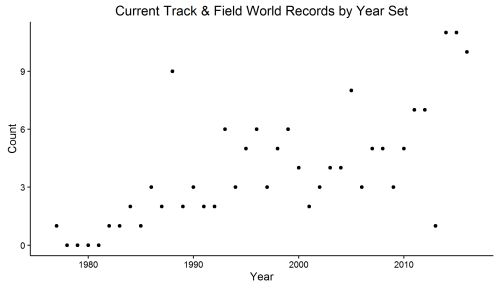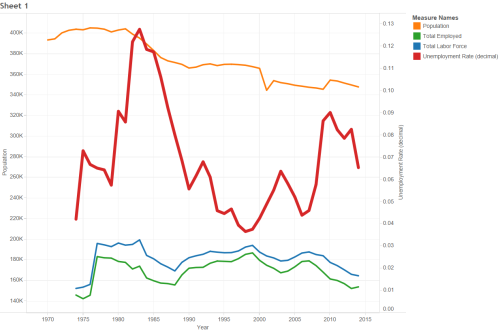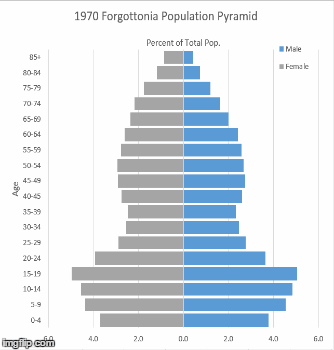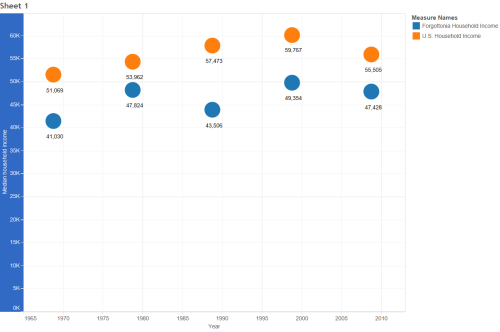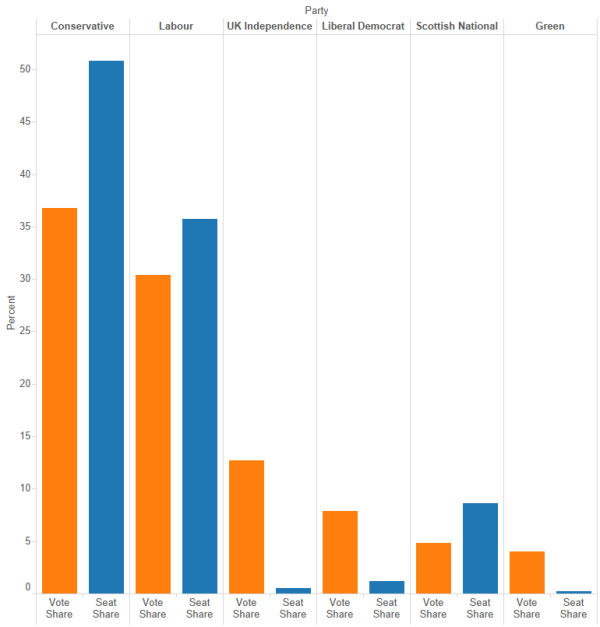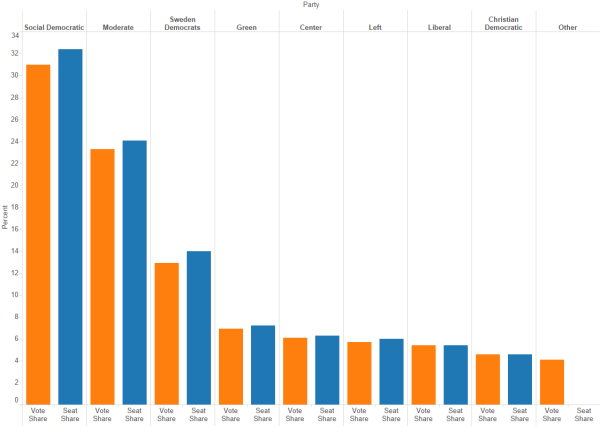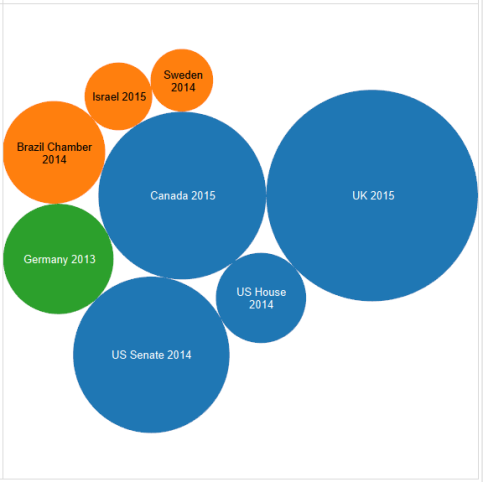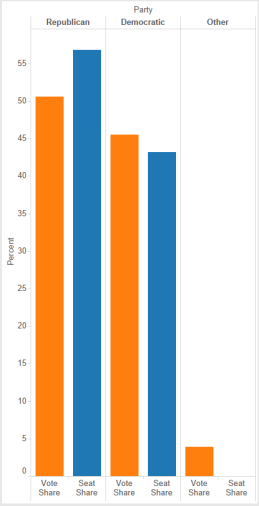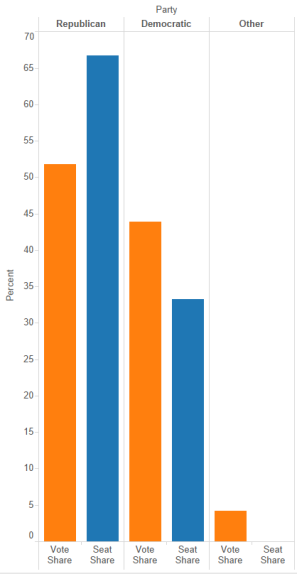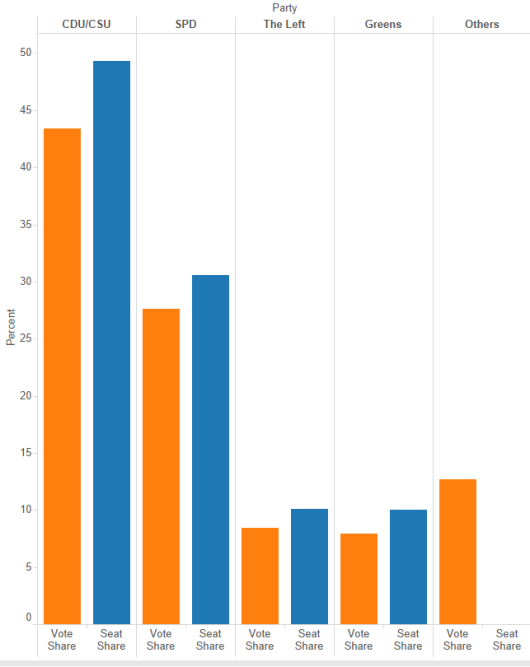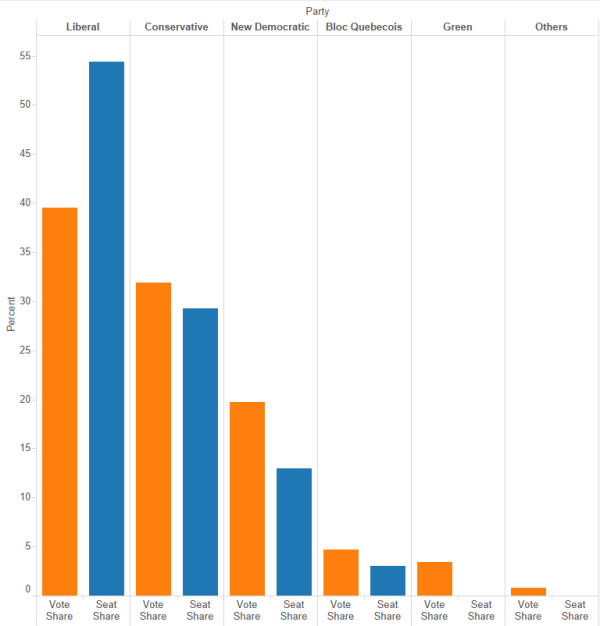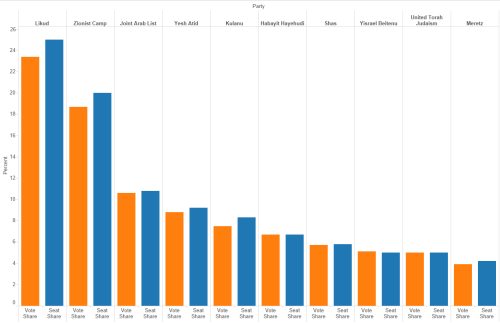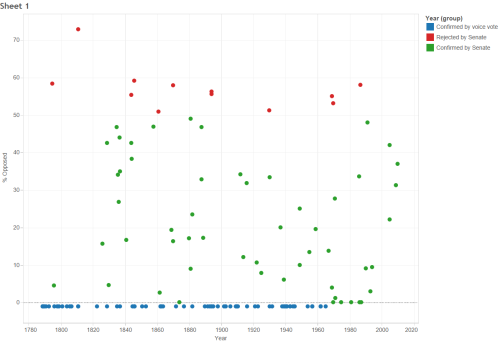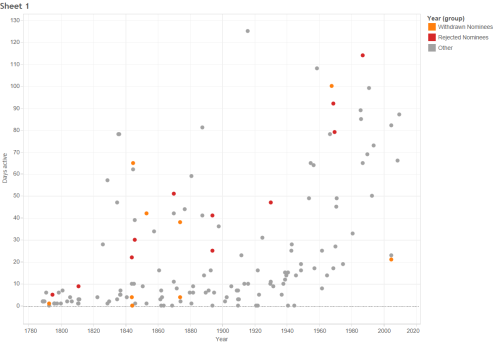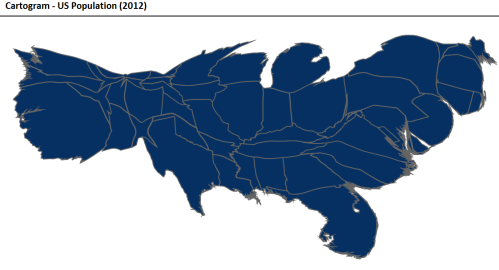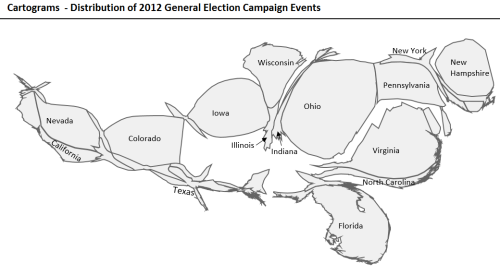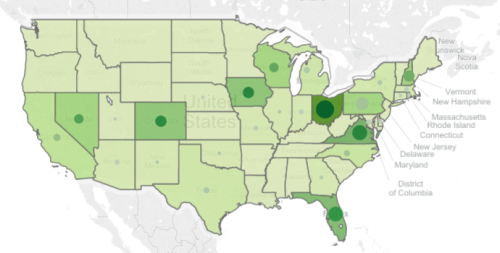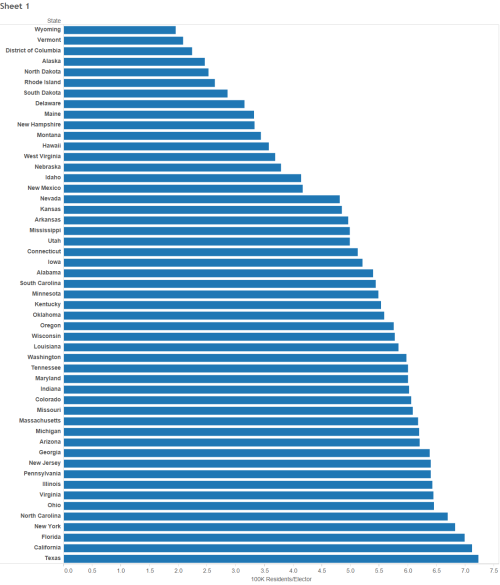Gerrymandering since 2000
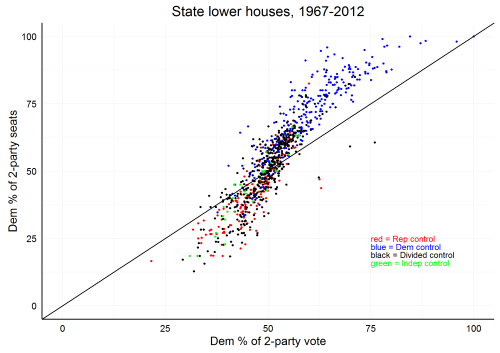
After every census, state legislators across the country engage in the once-a-decade process of drawing themselves the most favorable seats possible. We call this gerrymandering, after a conspicuously lizard-shaped district drawn in Massachusetts in 1812. It’s a thoroughly bipartisan practice. As I show below, Democrats and Republicans alike have committed the practice with equal aplomb in recent years. But there is a solution. A handful of states have created independent redistricting commissions, which draw the boundaries of legislative districts without political pressures.
In the charts below, I plot the Democratic Party’s share of vote against their share of seats in the lower house of each state from 2000-2012.[1] To control for the effects of third parties, I calculate these figures as the Democrat’s share of just the votes cast for Democrats and Republicans; likewise, the percent of seats won is the percent of seats won by just the two major parties. Because of this, the share of seats/votes won by the Republican Party is the exact opposite of amount displayed for Democrats. If Democrats won 48% of the 2-party vote in a state, then Republicans won 52%.

Above we see each election since 2000 in a state where Democrats had controlled the most recent redistricting. The black diagonal line indicates the equivalent division of votes and seats. Dots above the line are instances where Democrats received more seats than their share of votes. The seven blue dots represent elections where Democrats got a minority of the two-party vote but a majority of the seats.
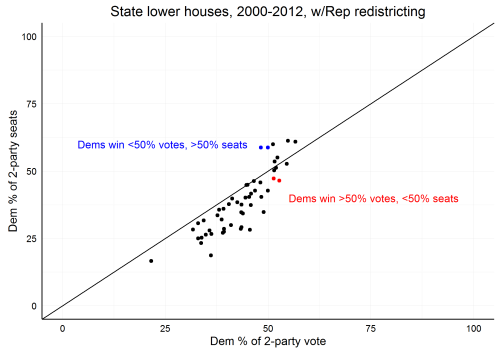
Here we see nearly the inverse of the last graph–Republican gerrymandering. In most instances, Republicans won more seats than their share of the vote.
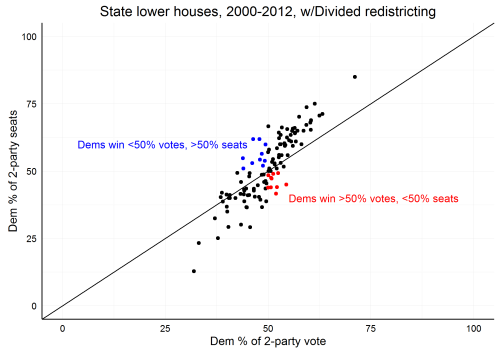
Frequently, no party controls enough of the state government to pass a redistricting bill on its own.[2] When the parties have to compromise, a more equitable distribution of votes occurs, as seen above. Notice that the pattern of dots is still steeper than the line. The more votes a party gets, the more likely it is to win a disproportionately high amount of seats, apart from gerrymandering. This is thanks to America’s first-past-the-post voting system (FPTP), which prioritizes majority building over representative parity.
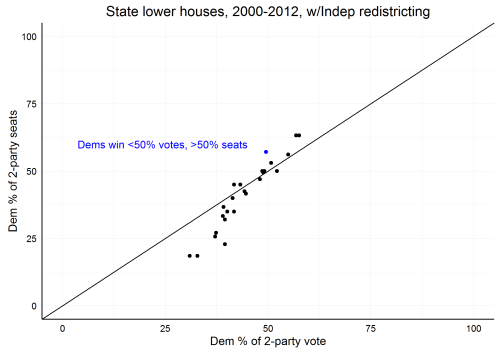
Only Alaska, Arizona, California, Idaho, Montana, and Washington use non-partisan independent redistricting commissions. Despite the limited sample size, this chart shows a much more equitable distribution of seats and votes than the gerrymandered versions above. While the partisan checks and balances of a divided government also produces a more equitable distribution, independent redistricting commissions can accomplish the same goal even when one party has control of the political apparatus.
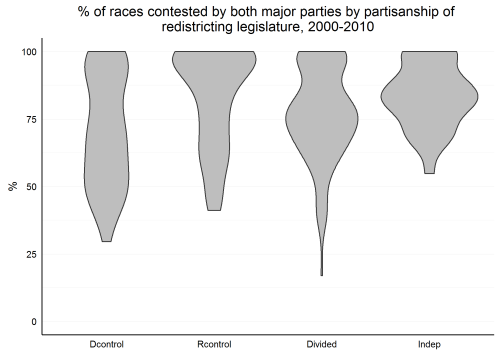
The charts above don’t fully capture gerrymandering’s negative affects. Gerrymandering doesn’t just skew seat allocation. It also discourages opposition candidates from running in districts designed to prevent them from winning. Voters, in turn, are less likely to show up if their races are uncontested. This violin plot shows the proportion of state lower house elections contested by both major parties. In some years less than 50% of races were contested in even some of the states with divided redistricting. This never occurred in a state with independent redistricting. Intentionally “safe” districts can still be drawn by legislatures with divided partisan redistricting because sitting legislators from both parties may compromise by drawing favorable seats for the status quo.
[1] Klarner, Carl; Berry, Williams; Carsey, Thomas; Jewell, Malcolm; Niemi, Richard; Powell, Lynda; Snyder, James, 2013, “State Legislative Election Returns Data, 1967-2010”, hdl:1902.1/20401, Harvard Dataverse, V1.
Klarner, Carl, 2013, “State Legislative Election Returns Data, 2011-2012”, hdl:1902.1/21549, Harvard Dataverse, V1
